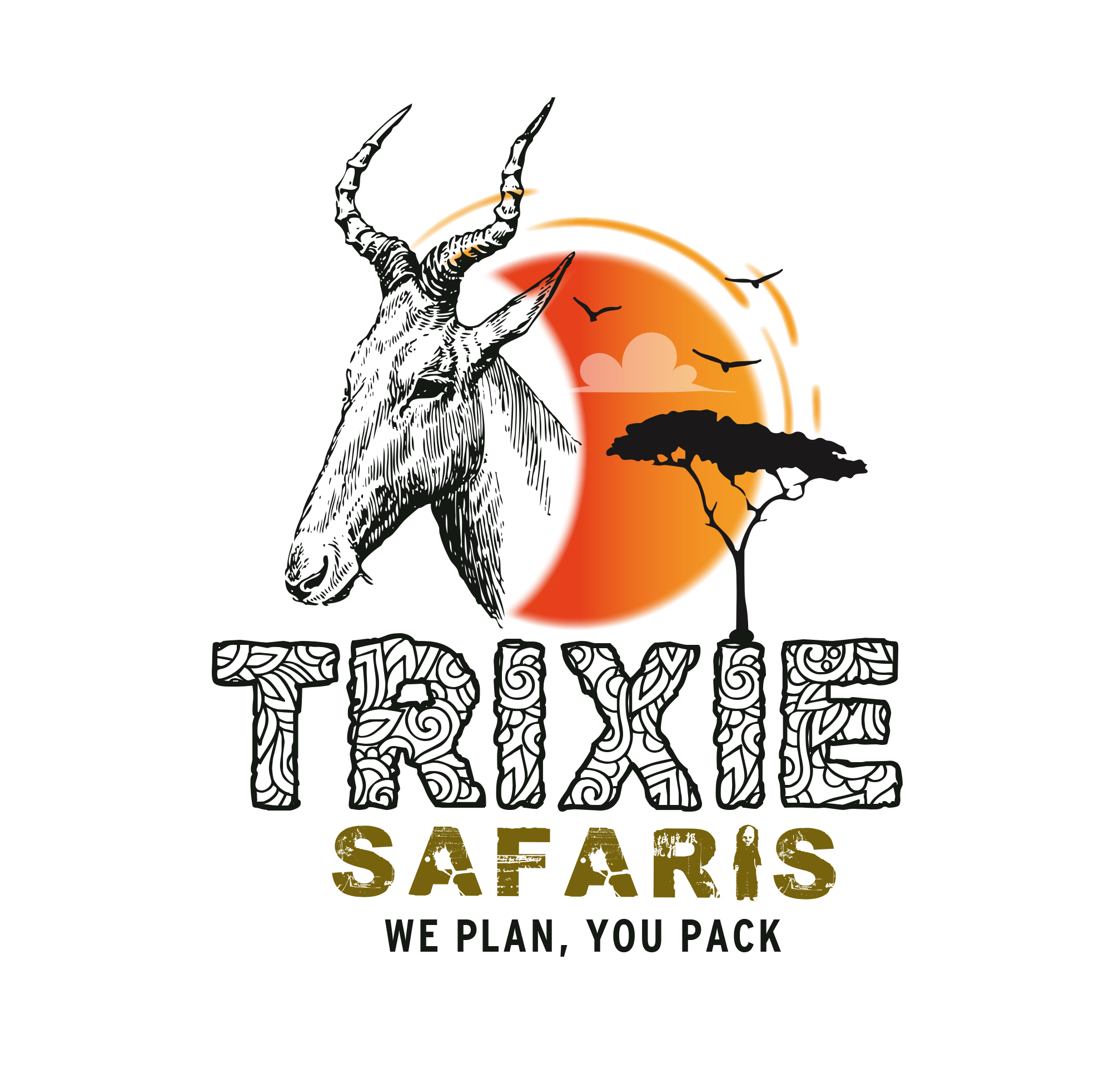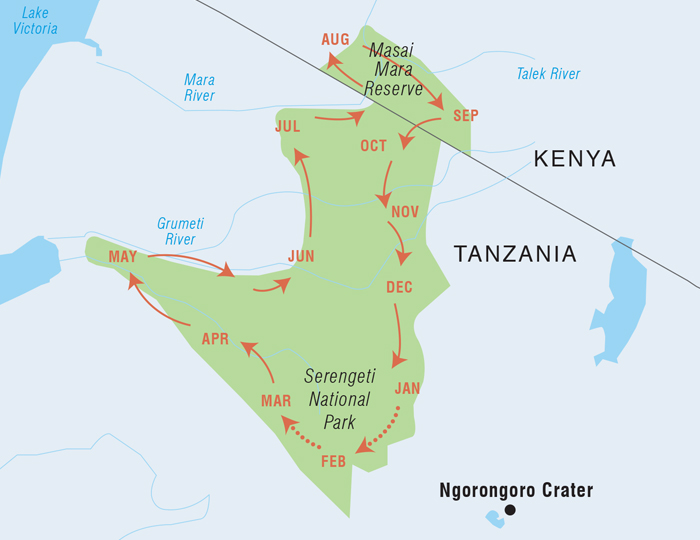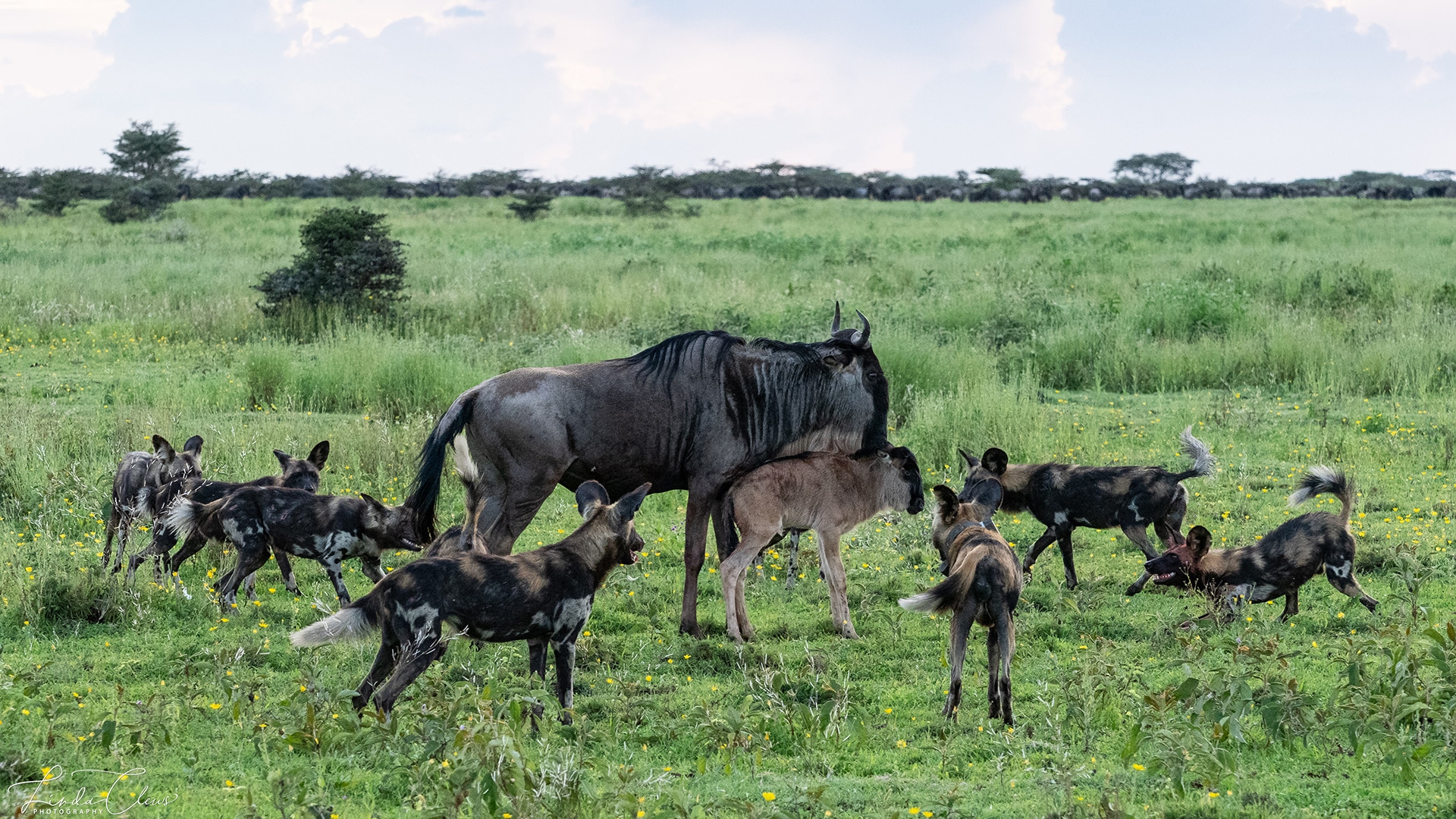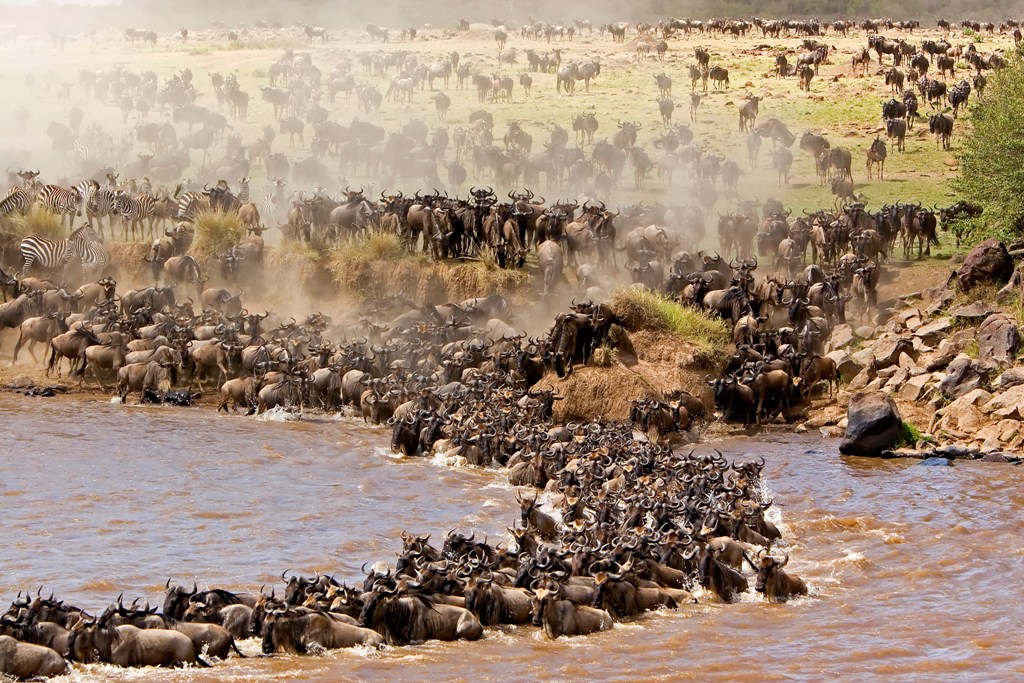The Great Migration
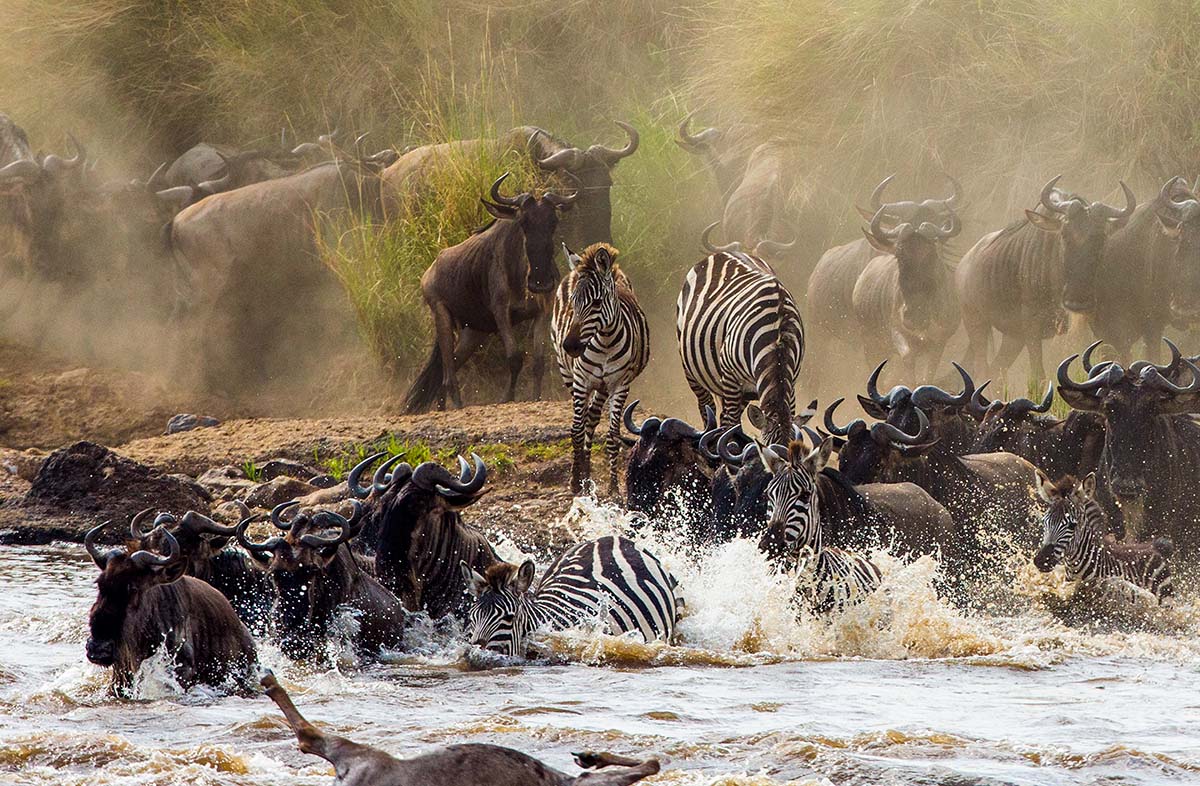
Prepare yourself for the most awe-inspiring safari adventure in East Africa – The Great Wildebeest Migration. This annual phenomenon sees over 1.4 million wildebeest, along with hundreds of thousands of zebras and gazelles, embark on an epic journey between Tanzania and Kenya. Each year, this incredible event draws wildlife enthusiasts from around the globe, eager to witness the suspenseful river crossings, the dramatic predator-prey interactions, and the breathtaking sight of 500,000 wildebeest calves taking their first steps.
Explore Tanzania, where adventure meets serenity and nature blends with culture.
The Year-Round Cycle
The Great Migration is not just a one-time event; it’s a continuous cycle that unfolds throughout the year. Each phase offers unique experiences, from calving seasons to perilous river crossings, providing visitors a front-row seat to one of nature’s most incredible spectacles. Here’s what you can expect during each stage of this magnificent journey:
Southern Serengeti Wildebeest Migration
December – March
The migration starts in the Southern Serengeti, reaching its climax in January. Known as the calving season migration, this phase takes place in the southern Serengeti and the Ndutu region of the Ngorongoro Conservation Area. Here, thousands of wildebeest, zebras, and gazelles gather on the lush Ndutu plains. This is a time of new life as half a million wildebeest calves are born, but it’s also a time of danger as predators like cheetahs, lions, and leopards lurk nearby.
Tip: Plan your visit in February to experience the calving season in full swing. Near the Kusini Kopjes, you can witness thrilling predator-prey interactions as the newborns and their herds begin their migration journey north.
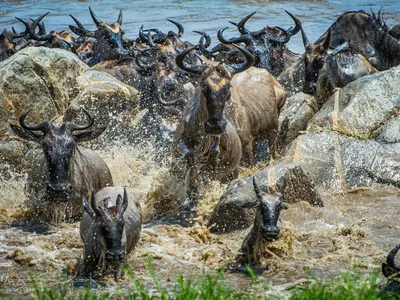
Western Serengeti Wildebeest Migration
April – June
During the rainy season, the migration shifts to the western Serengeti, moving through the lush western corridors towards the Grumeti River. This region is filled with predators, both on land and in the water. The Grumeti River presents one of the first challenges for the migrating herds, with massive Nile crocodiles lying in wait for their prey. The combination of high predator activity and the sheer number of animals make this one of the most dramatic parts of the migration.
Tip: For wildlife diversity, explore the Grumeti River area, home to not just the wildebeest but also black and white colobus monkeys, patas monkeys, impalas, and more. For a truly unique experience, consider a night game drive.
Northern Serengeti Wildebeest Migration
July – September
One of the most famous stages of the migration, the Northern Serengeti migration takes place from July to September. During this period, herds reach the Mara River and face their most dangerous obstacle: crossing into the Maasai Mara National Reserve in Kenya. The scene is intense, with hundreds of thousands of wildebeest braving the swift river currents and the hungry jaws of Nile crocodiles. This is the phase that has earned the migration its place as one of the seven wonders of the natural world.
Tip: Visit the Serengeti in July for the start of the river crossings and return to the Maasai Mara in October to witness the migration cycle in its full glory.
Plan Your Migration Safari Adventure
Whether you're hoping to witness the miracle of new life during the calving season, the suspense of river crossings, or the thrilling encounters with predators, the Great Wildebeest Migration offers something for everyone. Each phase of the migration tells a unique story of survival and perseverance. Let us help you plan the perfect safari to experience this world-renowned natural phenomenon up close and personal.
